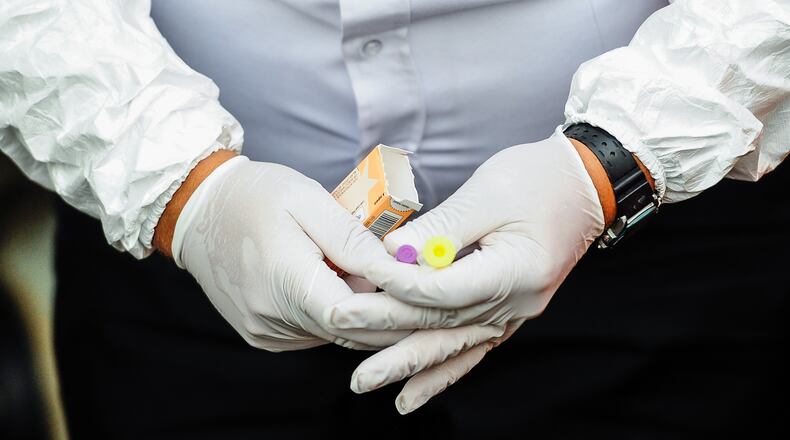MORE: Middletown’s heroin response team receives $60,000 grant
He said he hopes this decrease is a trend and not a “blip on the radar.”
“We hope we’re heading in the right direction,” Adkins said.
During the first seven months in 2017, there were 695 overdoses and 58 were fatalities in the city. This year, there have been 319 overdoses and 31 fatalities, according to statistics from the city.
These are suspected opioid incidents or suspected overdose deaths that are later verified by the city’s police and health departments and the Butler County Coroner’s Office, the city said.
Adkins said for the past two years, the city has implemented a multi-prong approach to the heroin epidemic. He mentioned the Quick Response Team that sends a police officer, firefighter/paramedic and social worker to see if someone who overdosed is interesting in treatment; the needle exchange program; and changes in law enforcement. He had said on several occasions that the city couldn’t arrest its way out of the epidemic.
Because of the decrease, the city’s first-responders are using less Narcan than before, Adkins told those who attended Monday’s summit at Atrium Medical Center. Adkins has a 911 board on his office computer and he’s also seen a decrease in those calls.
At the height of the epidemic, there were times, he said, when the city’s public safety department was in a “full blown crisis” and relied heavily on mutual aid from neighboring departments.
Middletown Police Chief Rodney Muterspaw said “serious” police calls have dropped as much as 25 percent and allowed officers to focus their efforts on other crimes. The drop, he said, is “really good news.”
The city also is seeing progress from its Chronic Nuisance Ordinance that was passed in 2015. The ordinance says that property owners who receive three nuisance activities or two drug-related charges at the same location will be billed the cost of the public safety responses by the city.
MORE: Landlords put on notice to clean up problem properties
Violations in addition to drug offenses include domestic disturbances, animal violations, gambling, weapons and sex offenses, according to the city.
Middletown Police Maj. Andy Warrick said he has contacted out-of-town landlords, whose properties have been tagged as nuisances, and nine out of 10 have “no clue what’s going on” at their properties, he said.
He called the ordinance “very successful.”
About the Author

